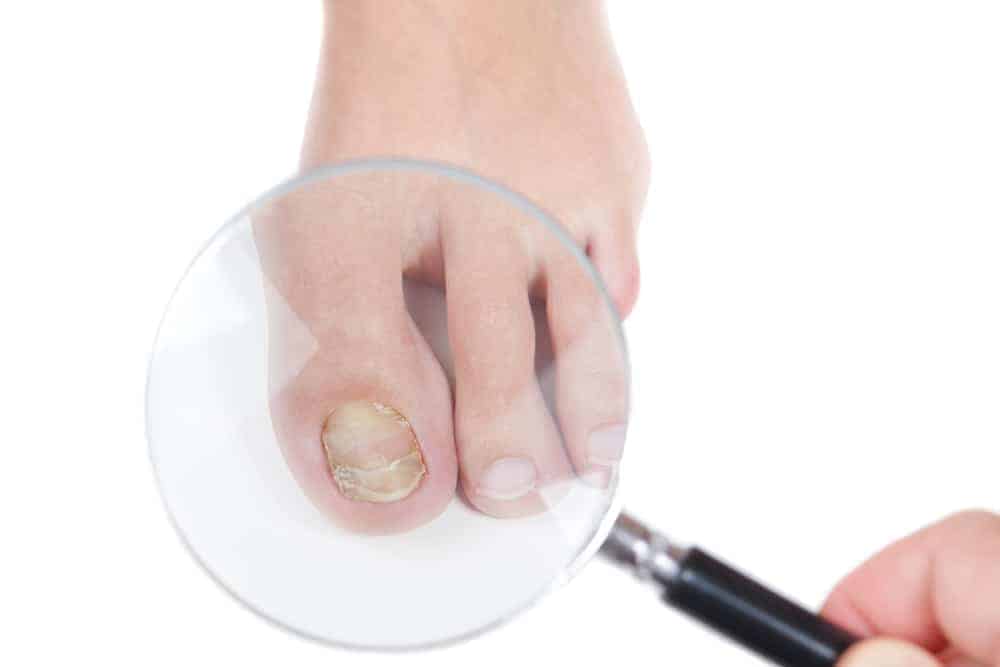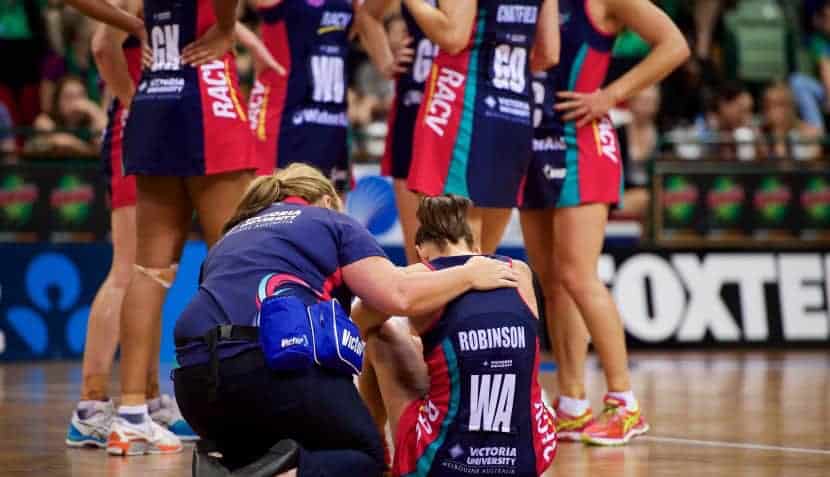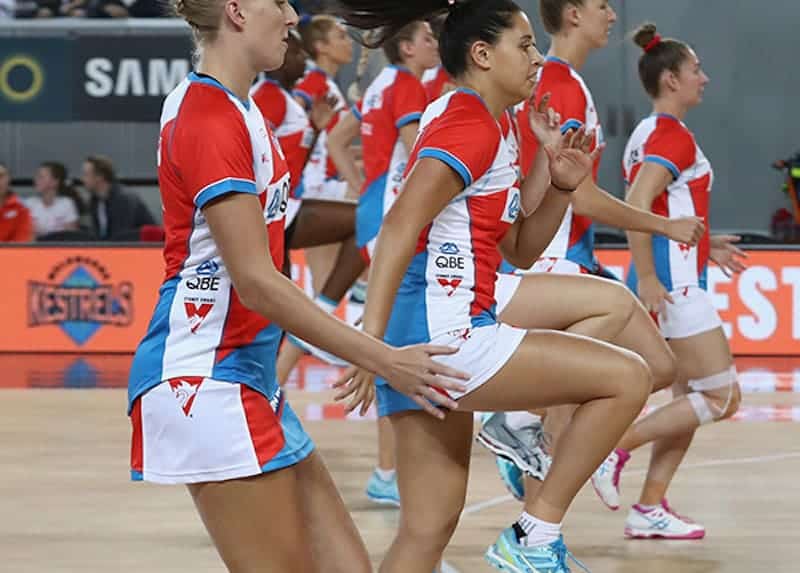
Fungal Nails

Nailing fungus with laser technology
Fungal nail infection can be unsightly and embarrassing. Not only can it cause the nail to thicken and turn a yucky yellow-brown colour, it can also lead to a nasty smell for some people. The other downside (Yes, there’s more!) is that fungal nail infection is notoriously hard to treat…until now!
If you have a fungal nail infection, you’re certainly not alone. It’s incredibly common and as a result people are willing to do anything to fight it. From drinking apple cider vinegar and applying Vicks VapoRub to slathering the toenail in tea tree oil, there’s a stack of weird and wonderful myths about treating fungal nail. Of course, none of them work.
Podiatrist Dr. Brenden Brown from Sydney-based clinic A Step Ahead Foot + Ankle Care explains, “Even over-the-counter treatments have a low success rate because of the side effects or the fact that the treatment takes months, even years—leading to poor adherence.”
The other important factor to consider when choosing a treatment for fungal nail infection is that fungus lives under the nail. If treatment doesn’t penetrate the nail (as is the case with ointments, lacquers and drops) it’s unlikely to kill the fungus.
This is where laser treatment comes in. Thanks to the wonder of science, laser has shown to be highly successful in treating fungal nail infection. Oversees studies have shown success rates as high as 80%*.
The lowdown on laser
Laser treatment works in the following way:
- Laser light passes through the nail plate into the nail bed
- The light is absorbed into the fungi
- The heat from the light kills both the fungi and the spores
A Step Ahead has been using laser for more than four years with amazing results. Although, not all laser treatments are equal.
Podiatrist Dr. Ryan Romero says, “Some clinics only treat the infected nail but we treat every single nail. We do this because the evidence shows that although you might not see the fungus in other nails, it’s 100% likely the fungal spores are there. Treating just one toenail almost guarantees failure. We treat all 10 toes and that’s why we’re seeing such fantastic results.”
Benefits of laser treatment for fungal nail
- Highly effective with high success rates reported
- Kills nail fungus in as little as two or three sessions
- No anaesthetic required
- No medication required
- Faster and more effective than topical ointments
- Minimal discomfort (just a warm sensation on application)
- No known side effects
“We see many people who have tried laser therapy elsewhere but haven’t got the results they wanted,” says Dr. Brenden. “There are many reasons for this but it shouldn’t put them off laser treatment all together.”
The right treatment and advice for fungal nail
A fungal nail infection is a lot like a tummy bug; it can be passed on to family members quite easily, so it’s important to do everything it takes not to share it and to prevent re-infection.
A vital part of treating fungal nail infection is finding the cause. Fungal spores live everywhere; in the carpet, in your shoes, in your socks— so it’s important that all of these areas are treated, not just the toenail and surrounding area.
A Step Ahead ensures all its patients are armed with the right take-home advice to banish rogue fungi spores and keep fungal nail infection at bay for good.
Next steps…
If you’re losing the fight against toenail fungus, let us nail it with laser!
A Step Ahead Foot + Ankle Care is based in Western Sydney. We have multiple practitioners with loads of experience treating fungal nail infection!
If you’d like more information please contact our helpful front desk team. They are brilliant at working through what help you need, guiding you to the appointment that is right for you or your family, running through cost and then reserving your appointment time. Call us today on +61 2 9673 2987 we look forward to helping.
Got a question about fungal nail or any other foot or ankle concern? Visit us on instagram #AskDrFoot or check us out on Facebook.
Related articles:
Beating fungal nail infection this beach season
How to treat and prevent fungal nail
* No medical treatment can guarantee 100% success. Registered medical and health professions in Australia are by law not allowed to guarantee success. This comes as a result of all human bodies reacting differently to treatments. Patients should thoroughly consider all treatment options available to them.

Blog, Sports Care

Netball-related foot & lower leg injuries—and how to avoid them
Guess what? Netballers are three times more likely to sustain lower leg or knee injuries than people playing AFL, soccer or both codes of rugby.*
In addition, Sports Medicine Australia reveals that the rate of injury for netballers is 14 injuries per 1,000 hours played.
Common netball-related foot injuries include:
• Ankle sprains & strains
• Achilles tendinopathy
• Sever’s disease in kids
• Osgood-Schlatter disease (Knee pain) in kids
• Patellar tendinopathy (aka “Jumper’s Knee”)
• Plantar heel pain – incorporating plantar fasciitis, tibialis posterior tendonopathy or abductor hallucis pain
Preventing netball-related injuries
“Awareness of widespread netball-related injuries and knowing how to avoid them can go a long way to ensuring you see out the entire season,” says sports podiatrist and founder of A Step Ahead Foot + Ankle Care, Dr Brenden Brown.

Ankle sprains & strains
“Ankle sprains typically occur as a result of involuntary sliding or twisting of the feet when you step on slippery or unstable ground. The sprain happens when the foot is forced into an unnatural position.
“The intensity at which the ligaments stretch can sometimes be so severe that it causes fracture or serious inflammation and pain.
“An ankle strain is an injury to the muscle or tendon. For example, overstretching the muscle or tendon can result in a complete or partial tear, with symptoms ranging from moderately painful to disabling.
“To reduce the risk of injury netball players need to perform strengthening movements. This refers to strength exercises that focus on the glutes along with balance and co-ordination of the lower limbs, as well as sports-specific exercises,” says Dr Brenden.

Achilles tendinopathy
“We know that the most common cause of achilles tendinopathy is change in load; this refers to sudden alterations in the intensity or frequency of the sport. (It has nothing to do with weight!) Dramatic changes place abrupt pressure on the tendon to over work and this gives rise to achilles-related problems,” explains Dr Brenden.
“Prevention is about increasing the load gradually, over a period of time. Make sure you have a long lead into sports season and ensure you adequately warm up the achilles.”
He adds, “People often don’t recognise that going from wearing high heels to a flat or low heel radically changes the load on the tendon. If you’ve spent most of the year in a corporate environment, walking around in heels then you suddenly change to wearing trainers it’s not uncommon for achilles problems to arise.
“To overcome this, practice wearing flat shoes at home several afternoons a week. Start doing this well before the season begins so that you’re changing the load gradually.”
Patellar tendinopathy
It’s common for patella-related injuries and the associated symptoms to be caused by musclular imbalance. Practicing lower limb stability and strength exercises can be useful.
“It’s important to warm up appropriately and wear the correct footwear for the sport you’re playing,” adds Dr Brenden.
Sever’s disease
Sever’s disease is more of a repetitive strain injury than an actual disease—resulting in inflammation and irritation of the growth plate. There are several causes, including rapidly increasing physical activity in volume, intensity or frequency; doing activity in bare feet, poor foot posture (flat feet) and weak foot muscles.
Sever’s disease should be addressed by ensuring you warm up adequately before playing sport. “Warming up prepares the body for sport by improving blood flow to the area, increasing the muscle temperature and making muscles more pliable,” says Dr Brenden.
“And don’t forget to wear the right shoes for the sport you’re playing!”
Plantar heel pain
Plantar heel pain is often referred to as plantar fasciitis, tibialis posterior tendonopathy, abductor hallucis pain—amongst a number of other conditions that can cause plantar heel pain.
To help ward off plantar heel pain Dr Brenden advises not to change from wearing high heels to low (or flat) heels too quickly.
“Again, rapid changes in frequency, intensity or volume place significant pressure on the tendons, which can cause excessive strain and lead to injury.”
Tips to prevent netball-related lower limb injuries
- Don’t rely on ankle braces! Strong muscles protect you from sprains far more than braces do! Your gluteal muscles – yes your butt — has a major role to play here!
- Make sure you warm up. Cold muscles are less flexible and more prone to injury. Check our Dr Brenden’s ‘warm up to success tips’.
- Don’t rapidly increase physical activity in volume, intensity or frequency. If you’re not all that active outside of netball season you need to allow a longer lead time.
- Always wear the appropriate footwear for your sport. Choose Netball shoes – its hard to go past the Asics Netburner range (See Dr Brenden’s article ‘Your guide to choosing the best netball shoe’ or head over to our YouTube channel for his Netburner reviews).
- If your pain or problems continue, visit a sports podiatrist to check your foot posture. Addressing foot posture prevents muscles from over compensating, leading to less ongoing problems.
- Ensure your footwear fits you properly (loose netball shoes can cause falls, increasing risk of ankle injury).
- Take the time to cool down. Slow stretching can reduce post-sports muscle tightness and soreness and may help reduce future risk of injury. An easy method is “Walk it out”. Don’t jump straight in the car and head home; allow yourself 10 minutes of moderate walking to cool your muscles down.
- If you know you have weak foot or ankle muscles, or you have poor foot posture, seek professional advice – All the stretching in the world wont get you better if your foot posture is continually meaning your muscles are over compensating. A trip to a podiatrist can help address the underlying foot posture issue.
- Ensure rehab is tailored to your needs. Netballers have specific groups of muscles they use – make sure your rehab is based around these muscles and your individual activity – Netball!
Next steps…
If this sounds all too familiar, we’d like to help. Perhaps this is something that a friend or relative may benefit from. If that is the case, we’d love you to share this article with them so they can find relief!
A Step Ahead Foot + Ankle Care is based in Western Sydney. We have multiple practitioners with loads of experience in this area. It’s our passion!
If you’d like more information, please contact our helpful front desk team. They are brilliant at working through what help you need, guiding you to the appointment that is right for your family, running through costings and then reserving your appointment time. Call us today on +61 2 9673 2987. We look forward to helping you.
Related articles:
About us
A Step Ahead Foot + Ankle Care is one of Sydney’s leading foot and ankle clinics. Principal podiatrist and founder of A Step Ahead Dr Brenden Brown (AKA Dr Foot) has been taking care of people’s feet for more than 20 years.
With a background in sports medicine and having served as a former president of the Australasian Podiatry Council, Brenden is a wealth of information when it comes to foot and ankle care.
Sources: * Australian Institute of Health and Welfare (December 2014)










 Dr Brenden’s White paper report on the “6 Reasons You Won’t Beat Heal Pain” outlines what’s stopping you from beating this and tips on how to stop it in its tracks!
Dr Brenden’s White paper report on the “6 Reasons You Won’t Beat Heal Pain” outlines what’s stopping you from beating this and tips on how to stop it in its tracks!